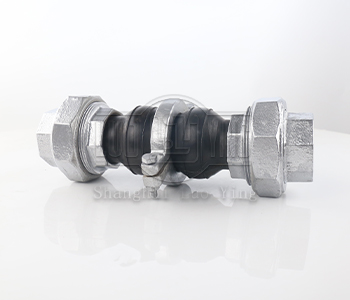Overhaul and maintenance methods for each part of the elastic rubber flexible connection.
Jul-23-26
Overhaul and maintenance methods for each part of the elastic rubber flexible connection.An elastic rubber flexible connection, also known as an expansion joint, is a critical component in piping systems. It provides flexibility, vibration isolation, and compensation for thermal expansion and contraction. To ensure optimal performance and durability, regular overhaul and maintenance of each part of the flexible connection are necessary. This article outlines the various maintenance methods for each part of the elastic rubber flexible connection.
Rubber Bellow: The rubber bellow is the main element of the flexible connection, responsible for absorbing movements and vibrations. Regular visual inspections should be conducted to check for cracks, tears, or excessive wear. Additionally, perform a squeeze test to ensure the rubber is still flexible and resistant. If any damage is observed, the rubber bellow should be replaced immediately.

Flanges: Flanges are used to connect the flexible connection to the piping system. Regularly inspect the flanges for any signs of leakage, corrosion, or damage. Proper alignment and pressure distribution are crucial for the flanges' performance, so ensure the flanges are aligned correctly and tighten the bolts evenly following the manufacturer's specifications.
Tie Rods: Tie rods are used to control the movement and maintain the shape of the flexible connection. Inspect the tie rods for corrosion, deformation, or loose connections. Tighten any loose connections and replace any damaged tie rods. Additionally, lubricate the tie rods regularly to prevent rust and ensure smooth operation.
Limiting Rods: Limiting rods prevent the rubber bellow from overstretching or compressing beyond its designed limits. Check the limiting rods for proper positioning and alignment. Ensure that the rods are not damaged or obstructed in any way. If any issues are found, adjust or replace the limiting rods as required.
Welds and Seals: Inspect the welds and seals of the flexible connection for any signs of cracks, leaks, or deterioration. Repair or replace any faulty welds or seals promptly to prevent leakage or further damage.
Cleaning and Maintenance: Regularly clean the flexible connection to remove dirt, debris, and contaminants. Use mild detergent and water to clean the rubber surfaces, avoiding abrasive materials or harsh chemicals that can damage the rubber. Additionally, inspect the flexible connection for any foreign objects or buildup that may affect its performance.
In conclusion, regular overhaul and maintenance of each part of the elastic rubber flexible connection are essential to ensure its optimal performance and longevity. Visual inspections, testing, repairs, and replacements should be carried out as necessary. By following these maintenance methods, you can maximize the lifespan and reliability of your elastic rubber flexible connection in piping systems.

